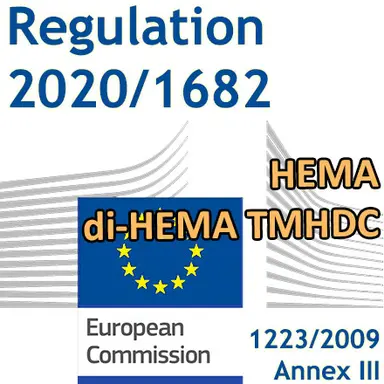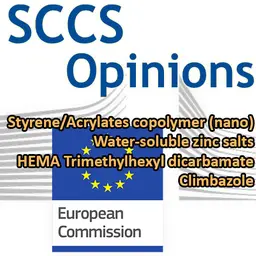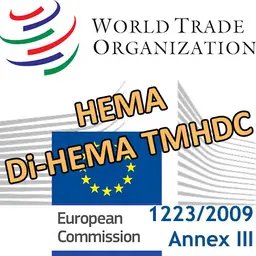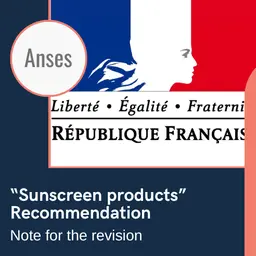
Regulation 2020/1682, dated 12 November 2020, published in the Official Journal of the European Union on 13 November 2020, amends Annex III (Restricted substances) to Cosmetics Regulation 1223/2009 to add HEMA and di-Hema Trimethylhexyl Dicarbamate. The measure will apply from 3 June 2021.
The whereas of Regulation 2020/1682
The substances 2-hydroxyethyl methacrylate (HEMA) and 11,14-Dioxa-2,9-diazaheptadec-16-enoic Acid, 4,4,6,16- tetramethyl-10,15-dioxo, 2-[(2-methyl-1-oxo-2-propenyl)oxy]ethyl ester (Di-HEMA Trimethylhexyl Dicarbamate or Di-HEMA TMHDC) are currently not subject to prohibition or restriction pursuant to Regulation (EC) No.1223/2009.
On 2 July 2014, the Swedish Medical Products Agency, which is the Swedish competent authority for the purposes of Regulation (EC) No.1223/2009, adopted and communicated a decision under Article 27 of Regulation (EC) No.1223/2009 introducing provisional restrictive measures on a nail cosmetic product that had caused a high number of undesirable effects. The substances identified as likely to cause those undesirable effects were HEMA and Di-HEMA TMHDC.
According to Article 27(2) of Regulation (EC) No.1223/2009, the Swedish Medical Products Agency communicated immediately to the Commission and the competent authorities of the other Member States the measures taken and any supporting data.
The Scientific Committee on Consumer Safety (SCCS) concluded in its Opinion of 21-22 June 2018 that ‘HEMA and di-HEMA-TMHDC, when applied appropriately to the nail plate (…) as part of an artificial nail modelling system, are not likely to pose a risk of sensitisation, provided that their use is restricted to the nail plate only and contact with the adjacent skin is avoided’. …















